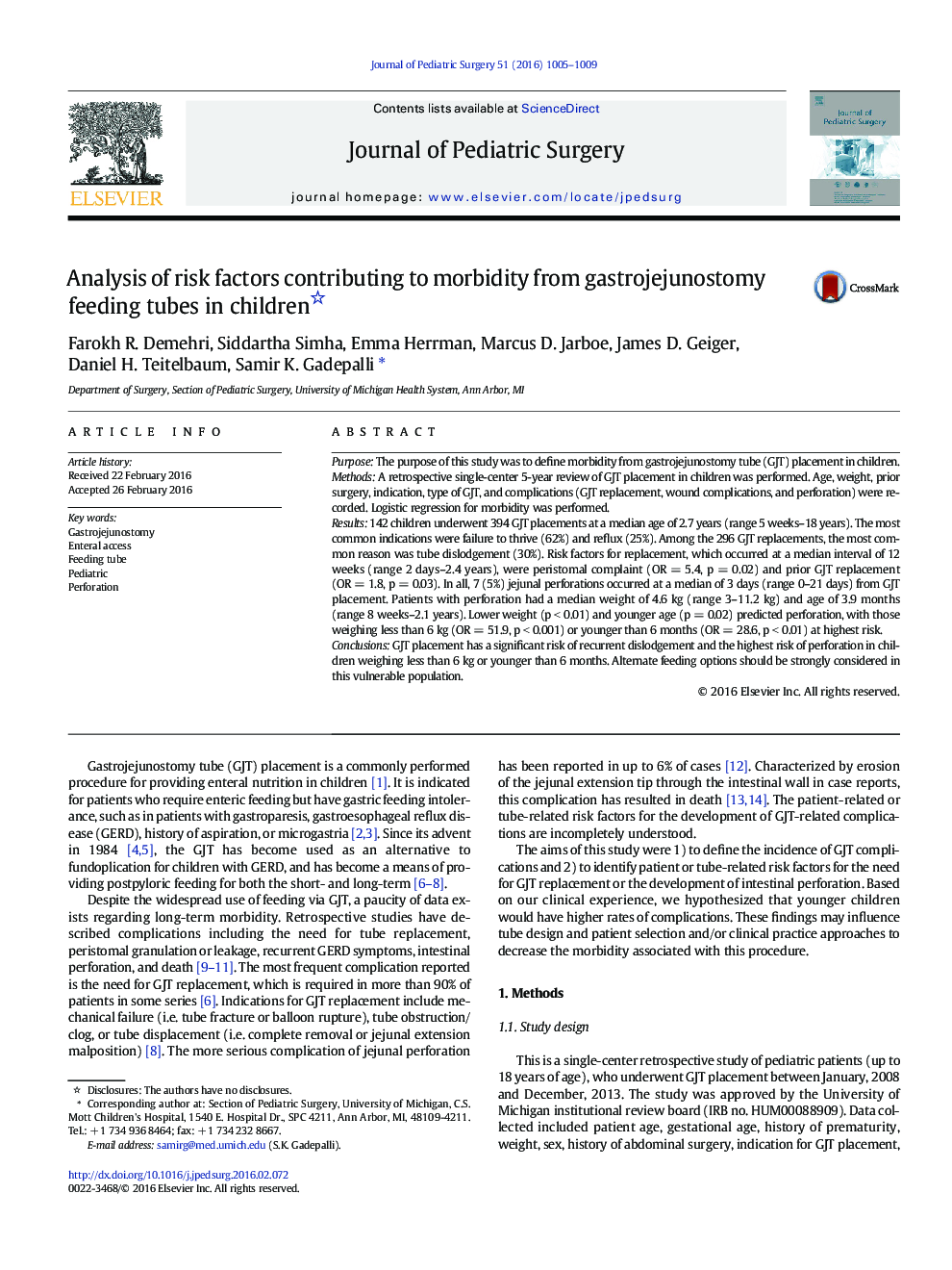| Article ID | Journal | Published Year | Pages | File Type |
|---|---|---|---|---|
| 4154924 | Journal of Pediatric Surgery | 2016 | 5 Pages |
PurposeThe purpose of this study was to define morbidity from gastrojejunostomy tube (GJT) placement in children.MethodsA retrospective single-center 5-year review of GJT placement in children was performed. Age, weight, prior surgery, indication, type of GJT, and complications (GJT replacement, wound complications, and perforation) were recorded. Logistic regression for morbidity was performed.Results142 children underwent 394 GJT placements at a median age of 2.7 years (range 5 weeks–18 years). The most common indications were failure to thrive (62%) and reflux (25%). Among the 296 GJT replacements, the most common reason was tube dislodgement (30%). Risk factors for replacement, which occurred at a median interval of 12 weeks (range 2 days–2.4 years), were peristomal complaint (OR = 5.4, p = 0.02) and prior GJT replacement (OR = 1.8, p = 0.03). In all, 7 (5%) jejunal perforations occurred at a median of 3 days (range 0–21 days) from GJT placement. Patients with perforation had a median weight of 4.6 kg (range 3–11.2 kg) and age of 3.9 months (range 8 weeks–2.1 years). Lower weight (p < 0.01) and younger age (p = 0.02) predicted perforation, with those weighing less than 6 kg (OR = 51.9, p < 0.001) or younger than 6 months (OR = 28.6, p < 0.01) at highest risk.ConclusionsGJT placement has a significant risk of recurrent dislodgement and the highest risk of perforation in children weighing less than 6 kg or younger than 6 months. Alternate feeding options should be strongly considered in this vulnerable population.
